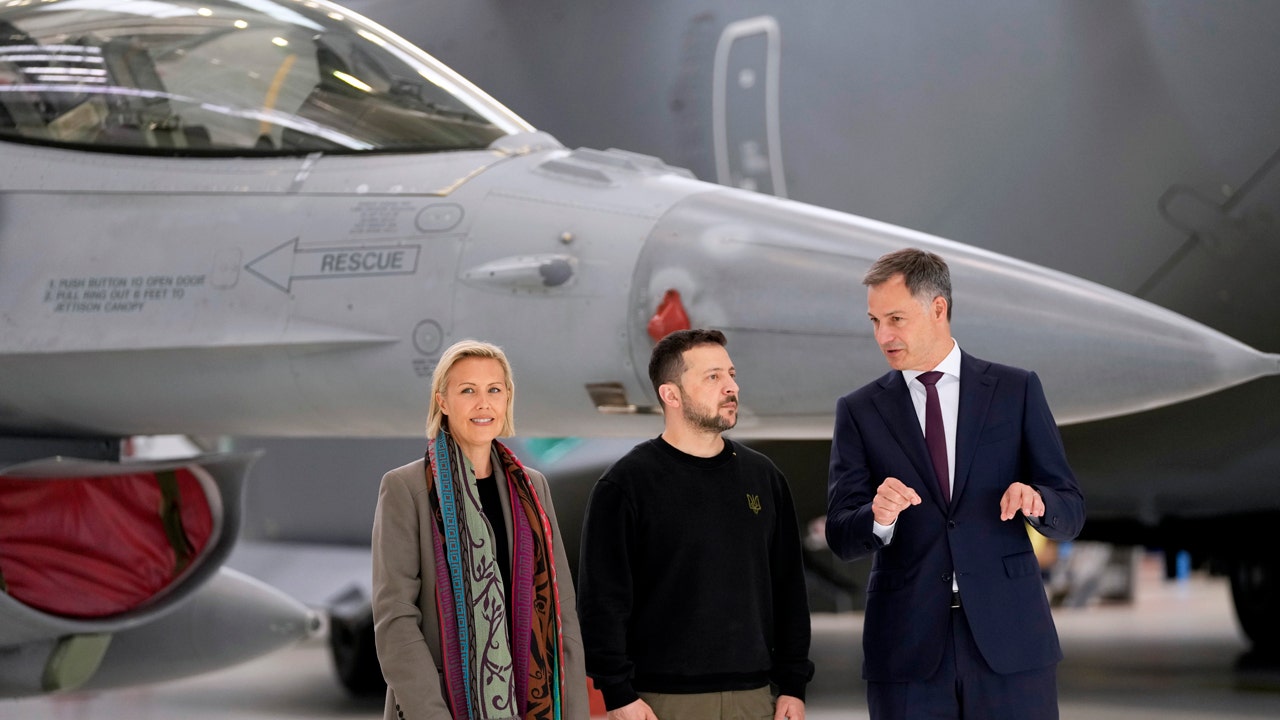- Ukraine may keep some of the F-16 fighter jets it expects to receive from its Western allies at foreign bases to protect them from Russian strikes.
- Russian President Vladimir Putin has warned that Moscow could consider launching strikes at facilities in NATO countries if they host the warplanes used in Ukraine.
- In response to Russia’s latest offensive, the U.S. and other NATO allies have allowed Ukraine to use weapons they supply to carry out limited attacks inside Russia.
Ukraine may keep some of the F-16 fighter jets it’s set to receive from its Western allies at foreign bases to protect them from Russian strikes, a senior Ukrainian military officer said Monday.
Belgium, Denmark, the Netherlands and Norway have committed to providing Ukraine with over 60 U.S.-made F-16 fighter jets to help it fend off Russian attacks. Ukrainian pilots are currently undergoing training to fly the warplanes ahead of the deliveries expected to start later this year.
Serhii Holubtsov, head of aviation within Ukraine’s air force, said that “a certain number of aircraft will be stored at secure air bases outside of Ukraine so that they are not targeted here.”
ZELENSKYY WELCOMES FRENCH PROMISES OF WARPLANES TO HELP FIGHT RUSSIA
Holubtsov told the U.S. government-funded Radio Free Europe/Radio Liberty that those F-16s could be used to replace damaged aircraft as they undergo repairs as well as for training Ukrainian pilots abroad.
“This way, we can always have a certain number of aircraft in the operational fleet that corresponds to the number of pilots we have,” he said. “If there are more pilots, there will be more aircraft in Ukraine.”
Russian President Vladimir Putin has warned that Moscow could consider launching strikes at facilities in NATO countries if they host the warplanes used in Ukraine.
Belgium’s Prime Minister Alexander De Croo, right, and Belgium’s Defense Minister Ludivine Dedonder, left, stand with Ukraine’s President Volodymyr Zelenskyy, center, in front of an F-16 at Melsbroek military airport in Brussels, on May 28, 2024. (AP Photo/Virginia Mayo, File)
“If they are stationed at air bases outside the Ukrainian borders and used in combat, we will have to see how and where to strike the assets used in combat against us,” Putin said last year. “It poses a serious danger of NATO being further drawn into the conflict.”
In March, the Russian leader again warned Ukraine’s Western allies against providing air bases from where the F-16s could launch sorties against the Kremlin’s forces. Those bases would become a “legitimate target,” he said.
“F-16s are capable of carrying nuclear weapons, and we will also need to take that into account while organizing our combat operations,” Putin stated.
The F-16s require a high standard of runways and reinforced hangars to protect them from attacks on the ground. It’s not clear how many Ukrainian air bases can meet those requirements, and Russia would be certain to quickly target a few that could accommodate them once the jets arrive.
Holubtsov noted that the F-16s will help protect front-line and border regions from Russian glide bombs that have inflicted significant damage to both troops and residential areas, including Kharkiv. Glide bombs are heavy Soviet-era bombs fitted with precision guidance systems and launched from aircraft flying out of range of air defenses.
“I think we will succeed, first of all, in pushing back the aircraft that drop glide bombs farther from the contact line,” he said. “If we manage to push them back at least another 19-31 miles, this can already be considered a turning point and an achievement, if not of superiority, then of parity in the airspace.”
Ukraine’s Western allies are trying to bolster military support for Kyiv as Russian troops have launched attacks along the more than 620-mile frontline, taking advantage of a lengthy delay in U.S. military aid. Ukraine is currently fighting to hold back a Russian push near its second-largest city of Kharkiv, less than 20 miles from the border.
CLICK HERE TO GET THE FOX NEWS APP
The U.S. and other NATO allies have responded to the latest Russian offensive by allowing Ukraine to use weapons they deliver to Kyiv to carry out limited attacks inside Russia. The decision could potentially impede Moscow’s ability to concentrate its troops for a bigger offensive near Kharkiv and in other border areas.
Last week, Putin responded by warning that Moscow “reserves the right” to arm adversaries of the West worldwide. “If they supply (weapons) to the combat zone and call for using these weapons against our territory, why don’t we have the right to do the same?” Putin said.
He didn’t specify where such arms might be sent. The U.S. has said that Russia has turned to North Korea and Iran to beef up its stock of relatively simple weapons, but Moscow could dip into its stock of high-tech missiles to share with adversaries of the West if Putin decides to fulfill his threat.





